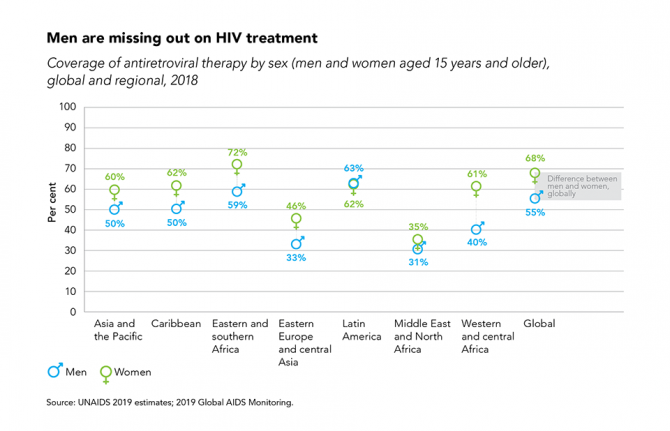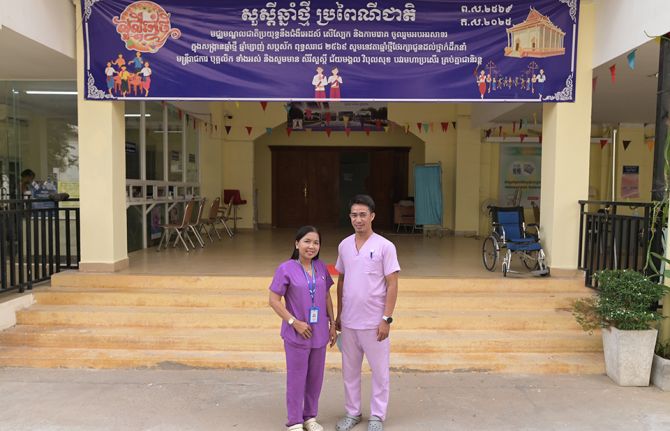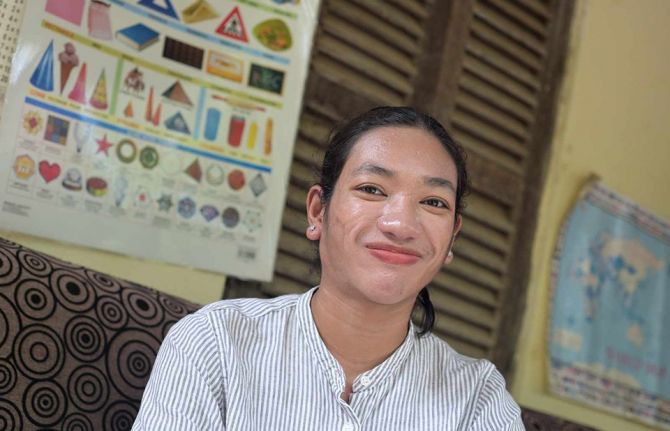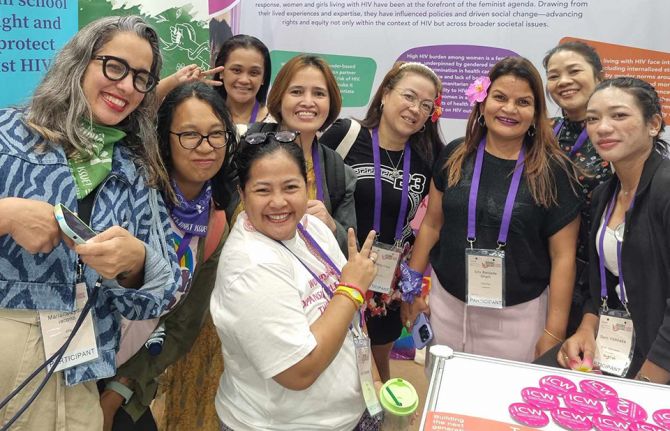

Update
Women are more likely to be on HIV treatment
28 April 2020
28 April 2020 28 April 2020Globally, among people living with HIV aged 15 years and older, coverage of antiretroviral therapy in 2018 was higher for women than for men. Numerous studies have shown that men are less likely than women to take an HIV test and to initiate and adhere to HIV treatment, which results in poorer clinical outcomes and a greater likelihood that they will die of AIDS-related causes. The low utilization of HIV services among men reflects general patterns of male health-seeking behaviour, which have been attributed to prevailing norms of masculinity, stigma, opportunity and other costs of attending health facilities, and inconveniently designed services (among other factors).
The disparity is seen across a range of geographic and epidemic settings. Regional estimates indicate that coverage of antiretroviral therapy was higher among women than men in all but one region with sex-disaggregated data. The disparity was most pronounced in western and central Africa, where an estimated 61% [32–67%] of women living with HIV were receiving HIV treatment in 2018, compared with 40% [18–41%] of their male peers. Treatment coverage for men and women differed by at least 10% in Asia and the Pacific, the Caribbean, eastern and central Africa, and eastern Europe and central Asia—trends that may reflect the fact that antenatal services have been a key entry point for HIV testing and treatment services in many regions.



